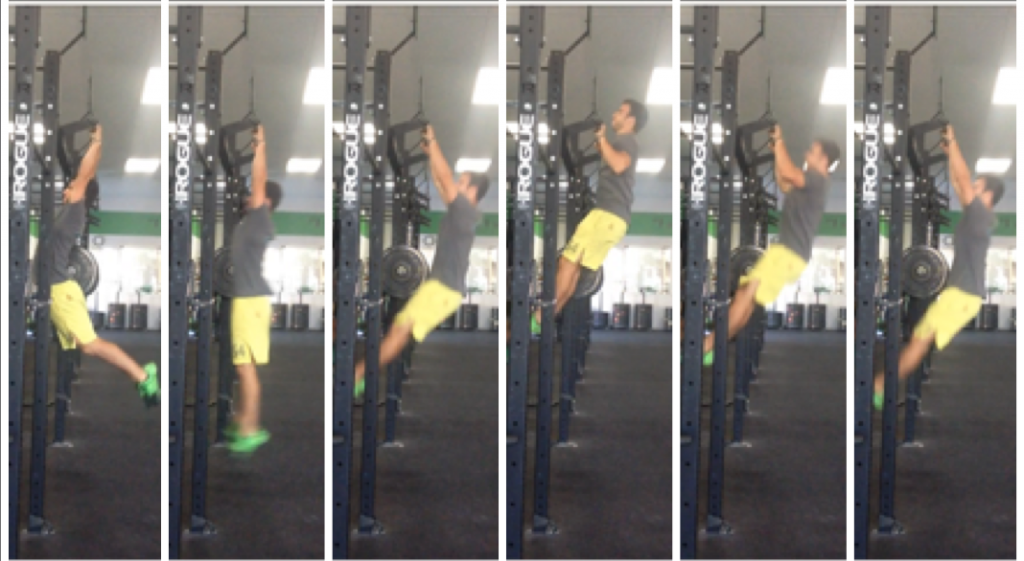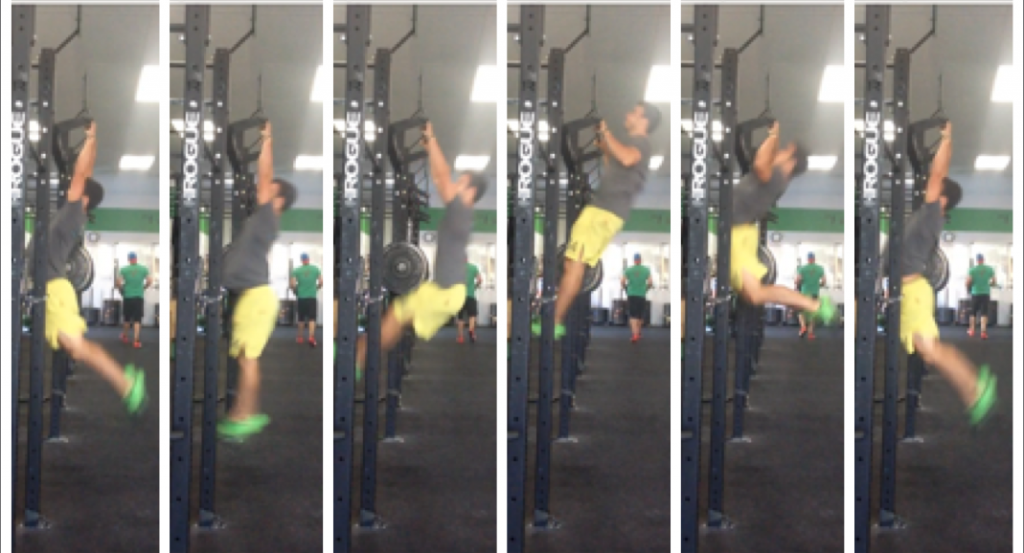Comparing Kipping Pull-Ups
Written by Hunter Britt; Videos by Travis Ewart
In the world of CrossFit, there are multiple ways to skin a cat when it comes to performing a kipping pull-up. Many of us have faced the challenge of transitioning from a standard kip to the butterfly pull-up. Often, when I am watching people try to get the butterfly-like motion down, I can tell that people are overthinking the movement and they are making butterfly pull-ups much more complicated than they need to.
Pull-Up Motion
So let’s talk about the motion for both the regular kip and the butterfly pull-up. The photo below shows the progression through one kipping pull-up (upper picture) compared to one butterfly pull-up (lower picture). In the first picture, we can see that the movement is just a standard arch body to hollow body position, just as most of us learn when we are learning the kipping motion. Now, let’s look at the other photos in the sequences in order and examine what is happening in each of the two positions.
KIPPING PULL-UPS
BUTTERFLY PULL-UPS
Kipping Swing vs Butterfly Motion
Photo 2: In both types, the abdominals are contracting and hips are coming through the bottom of the swing; this is where the power needs to happen.
Photo 3: In both types, the abdominals are fulling contracted and the body should now be in a hollow body position.
Photo 4: In both types, the kip has allowed the body to become unweighted and the athlete has teamed up its pull-up strength with inertia to get their chin over the horizontal plane of the pull-up bar. Notice the body is still in the hollow position for both pull-up options.
Photo 5: For the Kipping pull-up, the athlete maintains a hollow body position with the feet still in front of themselves and pushes away from the bar. For the Butterfly pull-up, the athlete pulls their hips and feet behind them to achieve an arch body position again and drops almost straight down.
Photo 6 (Last Photo): For the Kipping pull-up, the body will transfer from the hollow body position to the arch body position. For the Butterfly pull-up, the athlete body continues to fall straight down until the arms become extended and at that point, it should now be in the arch body position again.
Lastly, both types of pull-ups will begin the next rep by starting in the complete arch body position again and the arms have achieved full extension before there is any attempt to move into a hollow body position.
How to Butterfly Pull-Ups
If you are someone that is currently working on butterfly pull-ups or interested in trying them out, here is a couple of tips to think about.
Even though the butterfly-style of kipping pull-ups is faster, it still requires patience during the movement. Wait until your arms have reached a complete extension before you move from the arch body position to the hollow body position. You cannot efficiently kip with bent arms. A common fault is when people start to “kick” before they have reached full extension of the arms; this means they are attempting to kip without full tension.
Hopefully, this has cleared some things up for all of you that are trying to understand exactly what is happening and that this helps you understand the flow of each movement. Understand the movement and visualize yourself on that pull-up bar just cranking out fast, efficient pull-ups! Practice now so you can crush them in the Open!
How to Prepare for the 2020 CrossFit Open
Check out our variety of online programs – we offer complete Open prep for all athletes plus supplemental programs for gymnastics, weightlifting, strength, your engine, and more!
Check Out More Gymnastics Tips…
Pull-Ups Guide 101: Everything You Need to Know


question: I can do kipping pullup (and C2B) without any shoulder pain, however, when I do a butterfly the front of my right shoulder is in pain….any idea why this might be? This is the only movement where I experience this pain.
Do you have any tips on butterfly Chest-to-bar? I have normal down but can’t seem to get the CTBversion going.
Yes! Please give some tips on ctb. I’m assuming mine is thoracic immobility, but need some good tips 🙂
The number displayed next to the UMF mark represents the number of major Manuka, leptosperine, DHA, and MGO markers https://sites.google.com/view/manukaahoney/home